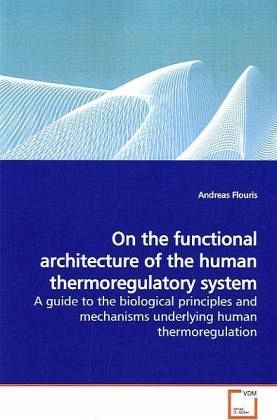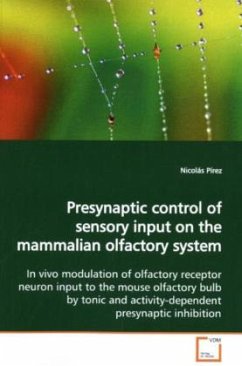
On the functional architecture of the human thermoregulatory system
A guide to the biological principles and mechanisms underlying human thermoregulation
Versandkostenfrei!
Versandfertig in 6-10 Tagen
52,99 €
inkl. MwSt.

PAYBACK Punkte
26 °P sammeln!
At the cellular and molecular level our knowledge ofmechanisms governing thermal balance is increasingdramatically aided by the continuous advances intechnology. Yet, at the systems level (i.e., thelevel of architecture and organization) severalfundamental questions remain unanswered. The mostprominent of these questions involves the mechanismby which the thermoregulatory threshold is determinedwhich, after numerous investigations, remains amystery. The current book presents findings from aseries of five experiments in conjunction withpublished data in an attempt to shed more light onthe funct...
At the cellular and molecular level our knowledge of
mechanisms governing thermal balance is increasing
dramatically aided by the continuous advances in
technology. Yet, at the systems level (i.e., the
level of architecture and organization) several
fundamental questions remain unanswered. The most
prominent of these questions involves the mechanism
by which the thermoregulatory threshold is determined
which, after numerous investigations, remains a
mystery. The current book presents findings from a
series of five experiments in conjunction with
published data in an attempt to shed more light on
the functional architecture of the human
thermoregulatory system. The hypothalamic
proportional control around an adjustable set point
has been the prevailing concept of human
thermoregulation for the past 50 years despite
criticism from authors proposing concepts such as the Comparator Model , the Null Zone Model and Heat
Regulation Model . An in-depth discussion of these
concepts is presented together with experiments
aiming to increase our thermoregulatory understanding.
mechanisms governing thermal balance is increasing
dramatically aided by the continuous advances in
technology. Yet, at the systems level (i.e., the
level of architecture and organization) several
fundamental questions remain unanswered. The most
prominent of these questions involves the mechanism
by which the thermoregulatory threshold is determined
which, after numerous investigations, remains a
mystery. The current book presents findings from a
series of five experiments in conjunction with
published data in an attempt to shed more light on
the functional architecture of the human
thermoregulatory system. The hypothalamic
proportional control around an adjustable set point
has been the prevailing concept of human
thermoregulation for the past 50 years despite
criticism from authors proposing concepts such as the Comparator Model , the Null Zone Model and Heat
Regulation Model . An in-depth discussion of these
concepts is presented together with experiments
aiming to increase our thermoregulatory understanding.












